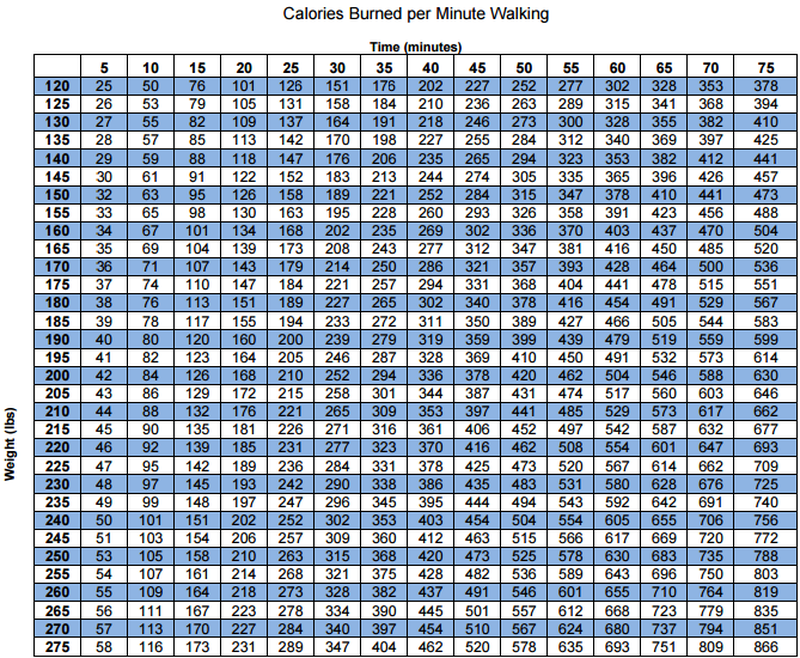Walking is among the most preferred types of exercises today. According to experts, 40 mins of walking can have magnificent health benefits. As compared to other types of exercises, walking is safer because the risk of injury is minimal. Additionally, walking is quite affordable; all you require is a pair of comfortable walking shoes. However, it is advisable that you consult your doctor before starting this exercise routine. In addition to ruling out any complications that may impair with the program, the doctor can help design a walking routine that is suitable to your lifestyle.

How Many Calories Can 40 Mins of Walking Burn?
Though it is a low impact type of exercise, walking may be used to burn a couple of calories every day. The rate at which you burn calories while walking is mainly determined by the rigorousness and the intensity of the exercise, as well as your body weight. For instance, a 125-pound heavy person will have to walk at 3.5 mph consistently for 40 minutes to burn about 160 calories. If the same person increased his or her pace to 4.5 mph, he or she will lose about 200 calories over the same period. The number of calories you burn translates directly to weight loss. For instance, if you lose 3,500 calories, you end up losing 1 lb. Therefore, you will need to burn 500 calories every day to lose 1 lbs in a week.
What Are the Benefits of Walking?
Help to Lose Weight
Though this may not be noticeable, the 40 minutes walking calories burned can translate to a significant weight loss. 40 mins of walking can lead to a healthy weight loss in all parts of the body. However, the rate of weight loss obtained while walking is affected by such factors as the intensity and speed of the exercise. To enhance weight loss while walking, you should consider swinging the arms while walking and walk at a faster rate, preferably uphill.
Prevent Various Diseases
Among the many benefits of walking is the ability to prevent an array of illnesses and diseases. Walking can prevent such conditions as high blood pressure, diabetes and heart disease. Additionally, the exercise can also regulate the levels of cholesterol in the body and relieve back pain. Walking regularly can also straighten the bones, hence preventing the occurrence of osteoporosis.
Help to Stabilize the Mind
Walking can greatly improve the state of mind by preventing anxiety and depression, as well as improving the mood. These are also helpful in relieving stress. Again, walking can improve focus and concentration, thus enhancing productivity in your life and work. To reap these benefits, you should include 40 mins of walking in your exercise program.
Enjoy the Fresh Air
Walking allows you to experience the open environment and reap a lot from it. For instance, you get to breathe fresh air while taking the walk. Additionally, you will get stimulated by the beauty of the environment, especially during the morning hours. Additionally, taking a walk will expose you to the sun rays, allowing the body to synthesize vitamin D. Walking will also give you the opportunity to interact with your neighbors.
Give You Energy
Many people do not walk and do not even consider it as a form of exercise. However, it can be of great help with regards to energizing the body. Walking enhances blood circulation in the body, hence increasing oxygen supply to the various organs and tissues. This alone will make you feel alive and alert. This form of exercise will also stimulate the joints and muscles, thus easing muscle tension. Rather than taking a mid-afternoon energy slump, you should consider taking a walk in the neighborhood.
Soup up Your Sex Life
Over the years, sex has been closely associated with exercise. A study, conducted among ladies between 45 and 55 years of age, revealed that the women who exercise, including walking regularly, reported increased sexual desire and satisfaction.
Save Your Mind
In a research, Italian researchers selected a group of 749 people with memory complications and observed them for four years. This research concluded that the people who walked regularly had a 27% lower risk of contracting dementia.
How to Get the Most Out of Your Walking
Use the right type of walking shoes: Using the wrong type of shoes for this exercise may result in foot pain. If you are not sure, you may consult a specialist. The ideal shoes should offer substantial support to the feet and allow the feet to breath.
Exercise at intervals: If you cannot walk consistently for 40 minutes, you may split the exercise into 10-minute intervals. Again, you can enhance your walking exercise by taking the stairs, instead of the elevator when accessing the building. You may even leave the car at the furthest point of the parking area and walk to the office.
Monitor your progress: While walking, you should consider measuring your progress using a wearable device, such as the pedometer. This will motivate you, depending on your exercise goals. For instance, it will let you know once you have reached your target number of steps, say 10,000 steps, or once you have reached your target walking period. A study, published in the Journal of the American Medical Association, revealed that people who use pedometers while walking walked about 2,000 more steps every day.
Use the right posture: While walking, you should also mind your posture, because tight hips, weak gluts, a slack tummy and tight hips can impair with the exercise. To negate these problems, you should consider combining your walking exercises with yoga, to stretch and straighten the body.
Massage the feet after walking: To enhance the experience, you should massage your feet after 40 mins of walking. Before going to bed, you should massage the toes and arches with warm sesame oil to help relieve stress and minimize the possibility of strain in the future.



View All Comments /Add Comment